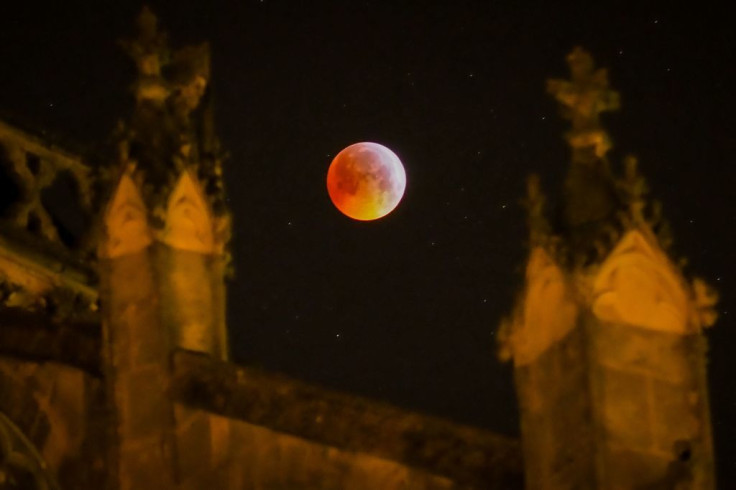Supermoon Total Lunar Eclipse: How To Watch This Week's 'Blood Moon'
KEY POINTS
- The May full moon will be the "closest and largest" full moon this year
- It will also bring a total lunar eclipse that will give the moon a reddish hue
- In the US, the western states will get a chance to catch a glimpse of the event
Skywatchers are in for a rather special treat this week as there will be a supermoon and a lunar eclipse on Wednesday. Here's how you can watch the spectacle.
April brought this year's first supermoon, and May is bringing another. This time, the moon will make its closest approach to Earth this year, which makes it 2021's largest supermoon. This means that it will appear to be the "closest and largest" full moon of 2021, NASA said.
Apart from being a supermoon, the May full moon will bring the only total lunar eclipse for the year, which also happens to be the first one in two and a half years.
During the event on Wednesday, the full moon that usually brightens dark nights will also become dark and have an eerie reddish hue, which explains its nickname "Blood Moon." NASA provided a visualization of what the total lunar eclipse will likely look like and even gave tips for those who want to take photographs of it.
🌑 Watch the total lunar eclipse & supermoon! 🌌
— NASA (@NASA) May 21, 2021
On Wed., May 26, our Moon will pass through the umbra of Earth's shadow, creating what is known as a "blood moon" in a total lunar eclipse! It’s going to be a dazzling sky show. Set your alarm: https://t.co/gx3zFoD51N pic.twitter.com/IYcZLFEFdc
"The best viewing for this eclipse is in the Pacific Rim – that's the western parts of the Americas, Australia and New Zealand, and Eastern Asia. For the U.S., the best viewing will be in Hawaii, Alaska, and the western states," NASA said.
"The farther west you are, the more of the eclipse you'll be able to see before the Moon sets that morning," it added.
For those in areas where the lunar eclipse will be visible, they may want to wake up rather early to go out and watch it because the moon will begin entering the edge of the Earth's shadow (penumbra) at 4:46 a.m. EDT and reach the darkest part of it (umbra) about an hour later at 5:45 a.m. EDT, the Old Farmer's Almanac said. It will leave the umbra later at 8:53 a.m. EDT.
According to NASA, "the real action" begins when the moon enters the umbra. Since eclipses happen at the same time in all parts of the world, people should check what time it will occur in their time zone so they won't miss it.
Because it's a lunar eclipse and not a solar eclipse, skywatchers won't need to use any special equipment to enjoy the event, NASA said. They would need only to find a spot from where they can look up, view the moon and enjoy the sights.
Those who live in areas where it won't be visible still have a chance to watch it live online via livestreams. For instance, the Griffith Observatory in Los Angeles will broadcast the event and so will the Lowell Observatory and Time and Date.
"We haven't had a total lunar eclipse occur with a supermoon in almost six years, and the next total lunar eclipse won't happen over North America until May 2022," NASA said.
As such, skywatchers may want to take the time and catch a glimpse of this rather special event.

© Copyright IBTimes 2025. All rights reserved.





















